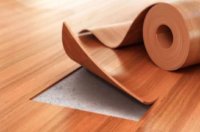Hardwood floors hold a regal and timeless charm, offering a delicate balance of elegance and practicality to the interior of your living spaces. However, you must put considerable effort into maintaining your hardwood floors’ natural warmth and personality. Exposure to moisture can instigate unwelcome changes to the structural integrity of your flooring and mold growth Read more
Plumbing Insulation

Hardwood floors hold a regal and timeless charm, offering a delicate balance of elegance and practicality to the interior of your living spaces. However, you must put considerable effort into maintaining your hardwood floors’ natural warmth and personality.
Exposure to moisture can instigate unwelcome changes to the structural integrity of your flooring and mold growth in the quiet corners of your home. Mold infestation threatens not only the integrity and splendor of these cherished floors but also your family’s health in terms of respiratory issues and allergies. Continue reading this article to learn about the latest advancements in plumbing systems to protect your hardwood floors against water damage.
How Does Water Damage Hardwood Floors
Here is how water affects your beautiful wooden floors
1. Mold
The most significant limitation of hardwood is its susceptibility to mold formation. Faulty pipes can lead to small leaks that can progress into water bursts if not timely repaired. This can cause leaks to accumulate under your hardwood to form mold in floor, accompanied by staining of the wood surface and a putrid smell. Mold can pose serious health hazards to people living in the house, relating to respiratory issues and skin and eye allergies.
2. Swelling and Cupping of Planks
Prolonged water damage can cause water to seep into the sub-flooring. The wooden planks start to absorb the water and present as swollen planks that rise at the edges and an uneven surface. Alternatively, the planks can warp and bow downwards, dripping water down the subflooring.
3. Soft Boards
Soft wooden flooring is the most evident and tell-tale sign of prolonged and extensive water damage. They can cause severe damage to the structural integrity of your floor and lead to slipping hazards. Soft boards signify the planks of your hardwood are rotten and need immediate replacement. They also indicate that the damage has spread to other areas of your house.
Plumbing Upgrades to Prevent Leakage and Mold
If you are a homeowner planning a renovation, it is essential to consider the latest, enhanced plumbing systems to ensure your hardwood floors are maintained in impeccable condition.
1. Leak Detection Technology
Modern leak-detecting sensors give early warnings against potential leaks. They work by monitoring the water flow through the pipelines and identifying disruptions in flow. The sensor automatically cuts off the water supply to the household through a main valve and prevents leakage until the issue has been resolved. Conveniently, these sensors are customizable, so you can adjust the settings according to your daily water usage, and the system will automatically detect excessive water flow that accompanies leakage.
2. Plumbing Insulation
Effective plumbing insulation around all the pipes in your household is a worthwhile investment. Plumbing insulations are installed to limit condensation on pipe surfaces, which can lead to corrosion and, ultimately, leaks and pipe bursts. Additionally, they provide a noise-cancellation effect and regulate temperatures, effectively reducing your bills in the cold seasons. Insulation can be achieved through various means available in the market, including:
- Cheap polyethylene foams with pre-cut slits that can conveniently slide over your pipes
- Versatile rubber insulation that is easy to install and can be used both indoors and outdoors
- Fiberglass insulation which is effective in preventing pipe bursts during the cold winters
- Mineral wool, with its noise-cancellation and fire-resistant properties
3. Anti-Flooding Mechanisms
Backflow occurs when the dirty municipal water mixes with clean water in your plumbing system. It mostly occurs when you don’t adequately safeguard your plumbing system with backflow prevention devices, so the municipal water is siphoned into your plumbing system when there is a drop in the city’s water pressure.
You can prevent backflow by using sump pump devices and vacuum breakers that break the suction vacuum formed by a backflow situation. Installation of these devices will ward off the risk of your house flooding with sewage water and maintain the integrity of your plumbing system and hardwood floors.
Endnote
Maintenance of your cherished hardwood floorings and an effective plumbing system go hand in hand. It is crucial to equip yourself with advanced plumbing devices to guard your wooden floors against mold infestations and preserve their classy look while prioritizing your family’s health and house’s hygiene.
